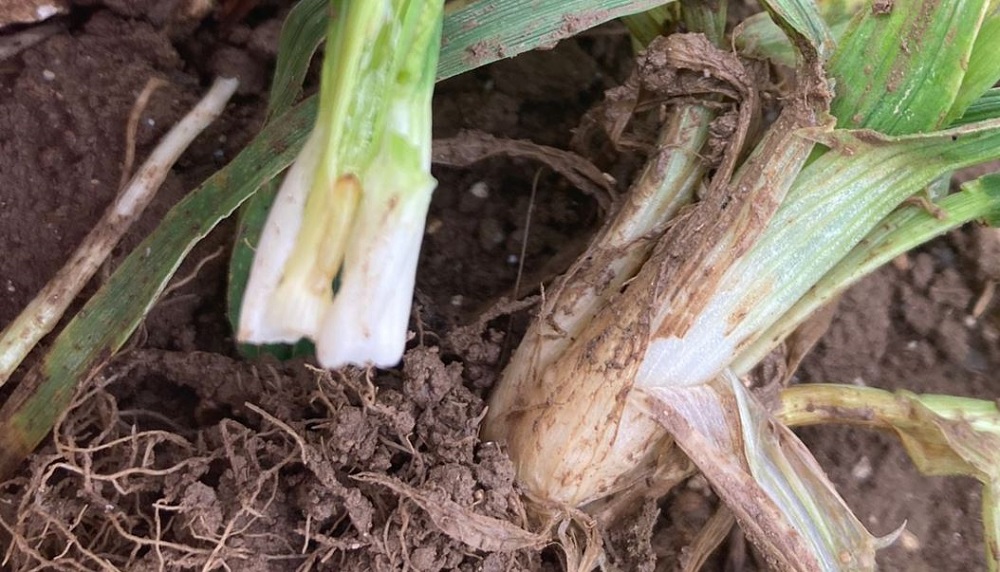- Home
- Knowledge library
- Risk factors and management of gout fly in cereals
Risk factors and management of gout fly in cereals
Gout fly is an occasional pest of cereals and can affect wheat, barley, and triticale. Its larvae burrow into shoots to feed, causing ‘deadheart’ symptoms to appear.
Risk factors in cereals
- Crops emerged by the end of September are at greatest risk from the autumn generation of flies
- Late-sown winter and spring crops are at greatest risk from the spring generation of flies. Crops at, or beyond, growth stage 37 by mid-May in southern England, or late May in the Midlands, usually suffer only minor damage
- Oats and maize are not affected
Fly identification
Scientific name: Chlorops pumilionis
Adult flies are yellow with black markings and 4–5 mm long.
Eggs are minute, creamy white and torpedo shaped.
Larvae are legless, translucent white and lack a distinct head. When fully grown, they are yellowish–white and 5.0–6.5 mm long, after which they form a somewhat flattened, brownish pupa.
Gout fly life cycle and crop damage
Nov–Feb: Larvae overwinter in the centre of the plant, close to the root.
Mar–Apr: Larvae pupate.
May–Jun: Adult flies emerge and lay eggs on leaves close to the central shoots – usually one per shoot.
May–Jul: Hatching larvae burrow into the centre of the shoot.
Jun–Aug: Larvae pupate.
Aug–Sep: Adult flies emerge and lay eggs on early sown winter cereals, weed grasses and volunteer cereals in stubble. Eggs hatch in 7–10 days.
Oct: If conditions are mild, adults may remain active.
In autumn-sown crops, damage is visible as swollen, gouty, and short tillers. This can kill the plant or result in other tillers producing weak ears in summer.
In spring-sown cereals, if the attack occurs before stem elongation, the tiller will be stunted, swollen and gouty and never produce an ear. If the plant is more developed, damage will be less severe; a poorly developed ear emerges with immature grains spoiled on one side, resulting in yield being halved.
Non-chemical and chemical control
Non-chemical control
Sow winter wheat and winter barley after late September, if in sheltered fields near woodland. Sow spring crops as early as practical in high-risk areas. Natural enemies include several parasitoid species.
How to encourage natural enemies of field crop pests
Monitoring
Look for gout fly near woodlands and hedgerows. Check plants for the presence of eggs at growth stage 12.
Thresholds
Treatment of winter crops may be beneficial when more than half of plants at growth stage 12 have eggs. There is no threshold for spring-sown crops.
Insecticide resistance
None known.
 AHDB
AHDB
 ADAS.JPG) ADAS
ADAS

